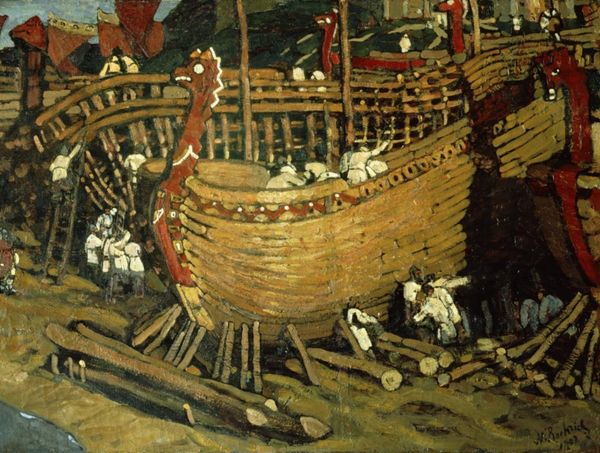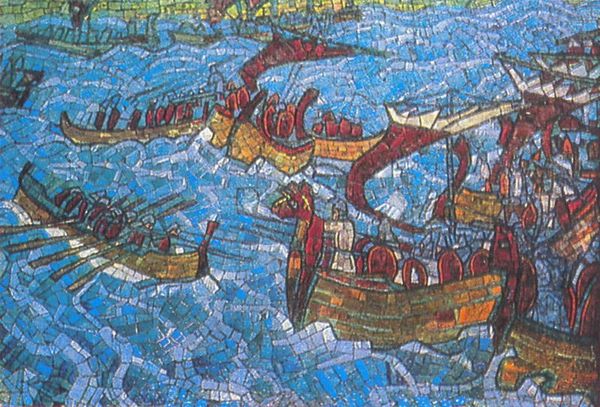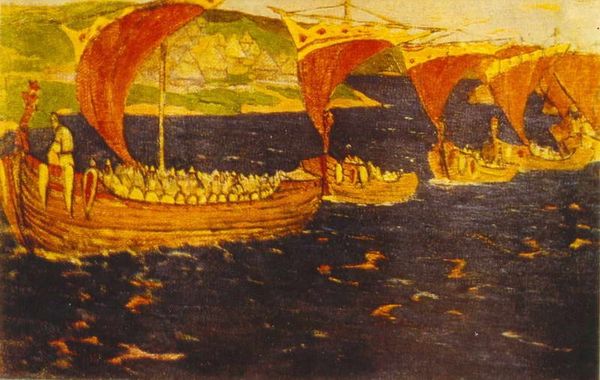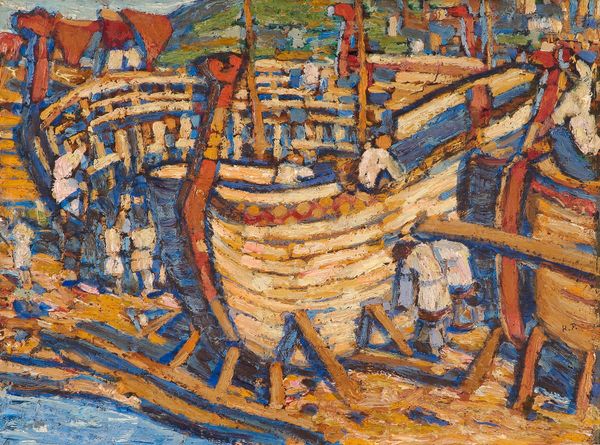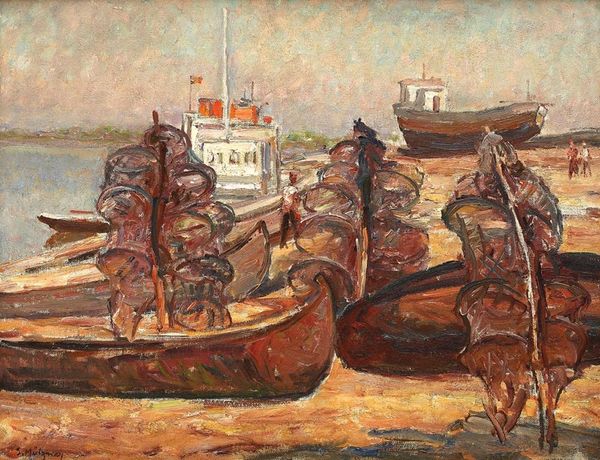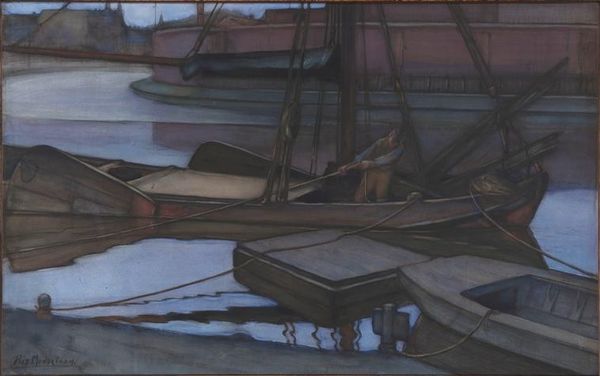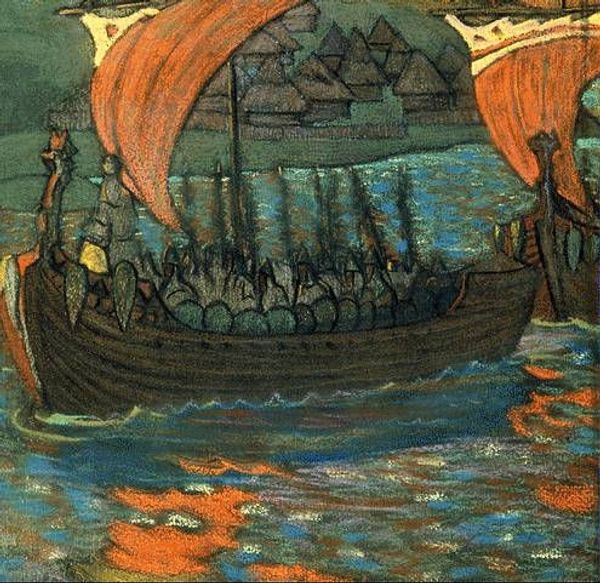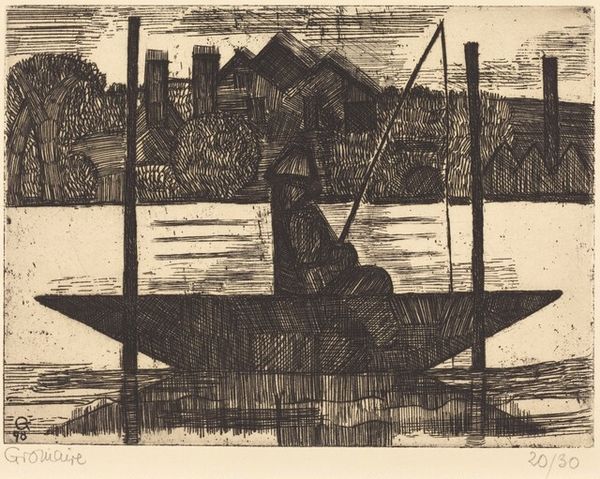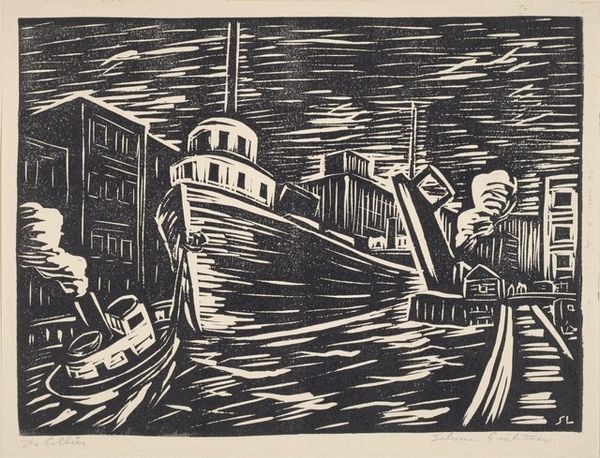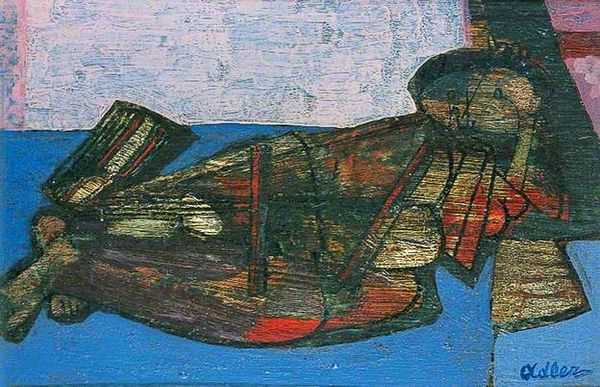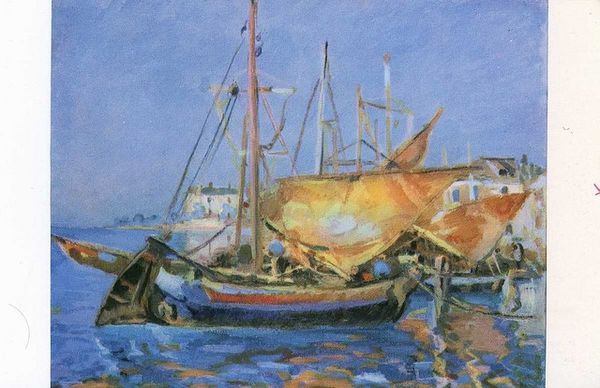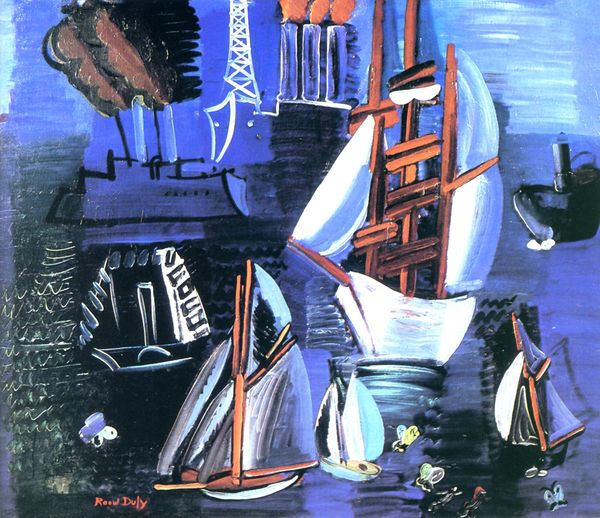
painting, oil-paint
#
boat
#
ship
#
painting
#
oil-paint
#
vehicle
#
landscape
#
oil painting
#
expressionism
#
water
#
history-painting
#
expressionist
Copyright: Public domain
Curator: Nicholas Roerich's "They Build the Ships," painted in 1903. What are your initial thoughts? Editor: Stark, yet there is an earthy romanticism, particularly with that muted reddish-brown palette. The scene appears both archaic and monumental, hinting at a narrative, though what exactly is left somewhat obscure. Curator: The work emerged during a time when Roerich, steeped in Russian history and folklore, was exploring pre-Christian Slavic themes. Roerich was incredibly prolific and often echoed his background. This particular work fits his career's wider ambition of promoting culture and exploring symbolism in design. Editor: Absolutely, it is the visual language that feels potent, like it’s invoking something. You can almost hear the clamor and toil associated with such a massive undertaking. The artist positions these boats not just as objects, but also as powerful emblems of a culture's prowess, maybe its survival too? Curator: He presented a romantic vision of early Slavic life, which resonated with burgeoning nationalist sentiments. It certainly fits the mold of 'history painting'—however romanticized it may have been. I find it interesting how the cityscapes blur the boundary between natural landscape and human settlements. Editor: True, it appears very stylized, with flat planes of color and deliberately simplified forms. And the stark composition places emphasis on manual labor: who were these workers and what were their lives? We rarely pause to consider the unacknowledged makers of empires, do we? Curator: This piece serves to show the construction of the Slavic identity and references a historical past with, maybe, present implications? A construction site then as in present? Editor: Very astute. A reminder that those boats were vehicles of both exploration and potential exploitation, weren't they? It makes me contemplate what myths are built and maintained as communities either rise or fall. Thanks for bringing this piece and those implications to life. Curator: Thank you. Looking closer into paintings helps to understand culture on a deeper level, seeing our common points from past to present.
Comments
No comments
Be the first to comment and join the conversation on the ultimate creative platform.
